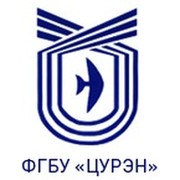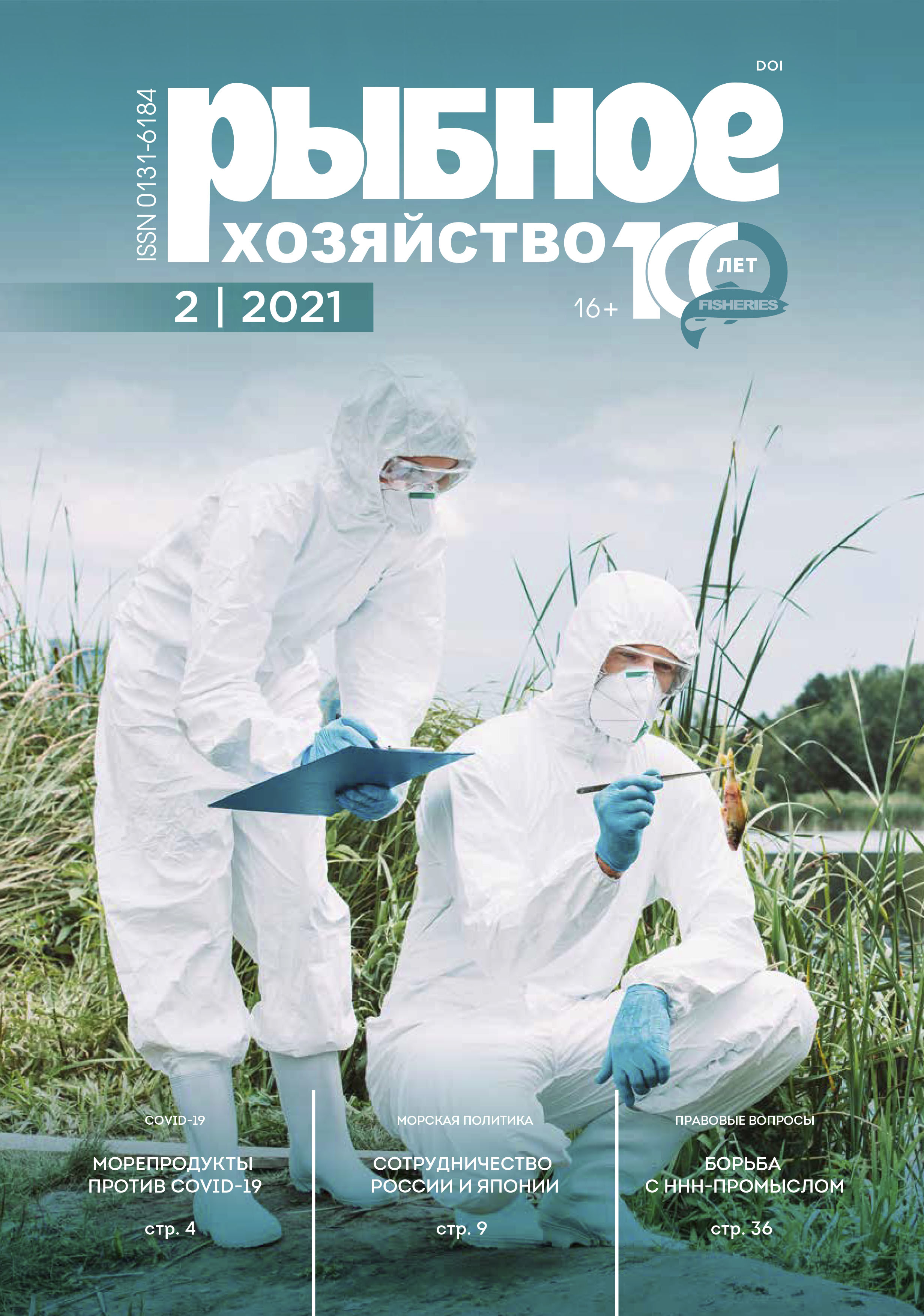Russian Federation
UDK 57 Биологические науки
GRNTI 69.09 Биологические ресурсы Мирового океана и внутренних водоемов
OKSO 06.07.01 Биологические науки
BBK 472 Рыбное хозяйство
The intensity of the Pacific salmon fry migration in the Amur basin depends on the water level and floods; In the clear water of the river Anyuy rolled migration is round-the-clock, but the intensity of migration shifts to the dark time of day. In recent years, the effectiveness of reproduction is not stable, there are "failures" when the number of young people decreases dramatically, which determines the need for constant observations of the stingray for adjustments of catch forecasts. The assessment of the total number of young people sliding into the Amur River basin shows the comparability of the number of natural young and young produced by fish farms, and more research is needed to determine the role and contribution of artificial reproduction.
Pacific salmon, Amur River basin, fish fry, migration, reproduction efficiency
1. Kuznetsov I.I. Some observations on the reproduction of Amur and Kamchatka salmon / I.I. Kuznetsov // Izv. Pacific. scientific and industrial station. - 1928. - Vol. 2. - Issue 3. - Pp. 12-57.
2. Levanidov V.Ya. The current state of the Amur autumn chum salmon and its spawning fund in the Amur basin: A report on research / V.Ya. Levanidov. - HfTINRO archive. - No. 6210. - 1958. - 112 p.
3. Rosly Yu.S. Population dynamics and reproduction of Pacific salmon in the Amur basin / Yu.S. Rosly. - Khabarovsk: Khabarovsk Publishing House, 2002. - 210 p.
4. Zolotukhin S.F. Contribution of Pacific salmon from the Amur River to the total salmon biomass of the North Pacific Ocean // PICES: Mechanisms of Marine Ecosystem Reorganization in the North Pacific Ocean, 2011. - P. 149.
5. Ostrovsky V.I. Factors determining the number of sloping juveniles of the autumn chum (Oncorhynchus chum) R. Khor / V.I. Ostrovsky, E.V. Podorozhnyuk // Izv. TINRO. - 2009. - Vol. 159. - Pp. 176-189.
6. Levanidov V.Ya. Reproduction of Amur salmon and the feed base of their young in the Amur tributaries / V.Ya. Levanidov // Izv. TINRO. - 1969. - Vol. 67. - 243 p.
7. Khovansky I.E., Litvintsev A.A., Krushanova A.S., Shukshina N.K. The current state of the chum salmon spawning stock within the boundaries of the state fisheries reserves of the Amur basin and methodological issues of the spawning grounds survey // The current state of aquatic bioresources: materials of the scientific conference dedicated to the 70th anniversary of S.M. Konovalov. - Vladivostok: TINRO-center, 2008. - Pp. 419-422.
8. Mlynar E.V. Results of accounting for sloping juvenile chum salmon Oncorhynchus chum salmon of the Duki River (Amgun River basin) in 2010 / E.V. Mlynar, M.G. Vdovichenko // Fishing issues. - 2012. - Vol. 13. - № 1 (49). - P. 90-95.
9. Podorozhnyuk E.V. Some features of the stingray of young autumn chum salmon. Ussuri // Materials of the region. scientific and practical conference "Ecology and safety of water resources". - Khabarovsk: DVGGU Publishing House, 2011. - Pp. 30-37.
10. Instructions on the procedure for conducting mandatory observations of Far Eastern salmon at the CNS and CNS of the basin fisheries protection departments and hospitals. - Vladivostok: TINRO, 1987. - 23 p.
11. Pavlov D.S. Mechanisms of sloping migration of juvenile river fish / D.S. Pavlov, A.I. Lupandin, V.V. Kostin. - M.: Nauka, 2007. - 216 p.
12. Khovansky I.E., Krushanova A.S. The number and morpho-biological indicators of autumn chum salmon in the basic rivers of fish-breeding plants - Gur and Anyu (Amur river basin) // Modern state of aquatic bioresources: materials of the scientific conference dedicated to the 70th anniversary of S.M. Konovalov. - Vladivostok: TINRO-center, 2008. - Pp. 818-822.
13. Khovansky I.E. The use of natural reservoirs for the cultivation of factory chum salmon juveniles / I. E. Khovansky, A.V. Fomin, B.P. Safronenkov // Fisheries. - 1991. - No. 10. - Pp. 22-23.
14. Khovansky I.E. The challenges and opportunities of managed salmon farming / I.E. Khovansky // Fisheries. - 2000. - No. 3. - Pp. 50-53.
15. Khovansky I.E. Eco-physiological and biotechnological effectiveness factors of salmon farming / I.E. Khovansky - Khabarovsk: Khabarovskoe knizhnoe Izd-vo, 2004. - 417 p.
16. Bespalova E.V. Possibilities of expanding the artificial reproduction of chum salmon using natural reservoirs (on the example of the experience of the Bijan LRZ) / E.V. Bespalova, O. N. Antipova // Fishing issues. - 2009. - Vol. 10. - № 3 (39). - Pp. 414-422.
17. Belyansky V.Ya. On the implementation of measures for the conservation, reproduction of aquatic biological resources and the organization of amateur and sports fishing in the Amur River basin and adjacent reservoirs / V.Ya. Belyansky, I.E. Khovansky // Fishing issues. - 2009. - Vol. 10. - № 3 (39). - Pp. 414-422.
18. Khovansky I.E., Naumova I.G., Selyutina V.E., Belyansky V.Ya. Salmon fish-breeding plants in the zone of activity of the Federal State Institution "Amurrybvod": stages of formation and prospects of artificial reproduction // The current state of aquatic bioresources: materials of the scientific conference dedicated to the 70th anniversary of S.M. Konovalov. - Vladivostok: TINRO-center, 2008. - Pp. 823-827.
19. Zolotukhin S.F. Pacific salmon of the Amur / S.F. Zolotukhin, A.N. Kanzeparova. - Vladivostok: World Wildlife Fund (WWF of Russia), 2019. - 110 p.
20. Kanzeparova A.N., Zolotukhin, S.F. the Amur river Basin and its Pacific salmon // NPAFC Newsletter. - 2021. - No. 49. - P. 10-16.
21. Zolotukhin S.F. Strategic mistakes the organization of work of the hatchery in the basins of major rivers on the example of the Amur river basin // Modern problems of salmon hatcheries of the Far East: Mater. International Scientific Research. the seminar. - Petropavlovsk-Kamchatsky: Kamchatka Printing Yard, 2006. - Pp. 124-126.
22. Kumantsov M.I. Artificial reproduction of aquatic bioresources in 2008 / M.I. Kumantsov // Fisheries. -- 2008. - No. 6. - Pp. 15-17.
23. Radchenko V.I. Stocks and fishing conditions of pink salmon and chum salmon in the places of their intensive incubation reproduction // NPAFC Newsletter. - 2021. - No. 49. - Pp. 31-55.











